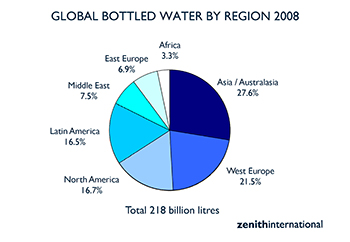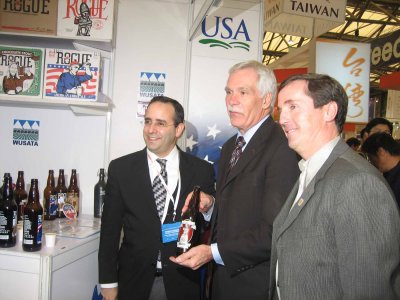Is this the new entrepreneurial swagger: “My house, my car, my wife, my dog, my brewery”? Arguing that “craft” has become too blurry a term, the Craft Beer Industry Association (CBIA) recently redrafted its membership rules which now put the focus on ownership. What was the CBIA has become the Independent Brewers Association. The implications are momentous. By signalling the end of cohabitation with corporate craft brewers, Australia’s independents have opened a political front of “us against them”.
More than 300 brewing experts from Southeast Asia, Europe, and North and South America attended the 5th Brewing Conference held in Bangkok, Thailand, from 11 to 13 June 2017. The event was jointly organized by the Thailand Beer Industry Guild (TBIG) and VLB Berlin for the fourth time now.
Every year it grows by leaps and bounds. The Brewers’ Association of Boulder, Colorado, USA sent out invitations to the Craft Brewers’ Conference & BrewExpo America and almost 13 000 answered the call. Also, the number of beers submitted for the 20th World Beer Cup, held immediately prior to the conference, defied all predictions – but more on that later.
The wave of craft beer engulfing the world has spared neither China nor the rest of Asia. Exact figures for craft breweries are not currently available for the Chinese market. Reports vary widely; between 200 and 4000 craft breweries are currently operating in the Middle Kingdom. NürnbergMesse China has taken full advantage of this trend by organizing the first China Craft Beer Conference & Exhibition (CBCE) together with its partner The Beer Link, held May 26th and 27th in Shanghai. BRAUWELT International was there.
Is an embargo the continuation of war by other means? It seems so, given that on 8 October 2013 Russia’s all-powerful state consumer protection agency, Rospotrebnadzor, again blocked 28 alcoholic Georgian drinks, most of them wines, from entry into Russia, citing their failure to meet “hygienic standards”, Russian media reported.
According to an old Italy saying there are two sides to every coin. This can also be applied to numerous aspects of the Italian beer market. The data provided by Assobirra, the association that gathers the beer and malt manufacturers, or rather the main Italian players on the market, show that from 1999 to 2009 domestic production increased from 12.179 million hectolitres to 12.776, while imports grew from 3.875 million hectolitres in 1999 to 5.822 million in 2009. Domestic consumption has also increased, from 15.675 million hectolitres in 1999 to 16.855 million hectolitres in 2009. The gap between production plus import and consumption is due to Italian beer exports, which increased discernibly in the ten year period (from 0.379 million hl to 1.743 million hl).
Asia/Australasia reinforced its position as the biggest volume regional market, achieving a 28 percent share, after a rise of 11 percent. Africa and the Middle East also recorded gains of 14 percent and 6 percent respectively, but hold a combined share of just 11 percent. Consumption increased in all other regions except West Europe, which remained static, and North America, which contracted by 0.7 percent in 2008. Despite a decline, the United States is still the largest national market in the world in both volume and value.
With the success of the American craft beer movement in the United States and ever-growing interest in Europe, the Brewers Association (BA) again turned its attention to the burgeoning Chinese market. During the week of December 8, 2008, the BA’s Export Development Program (EDP) showcased American craft beer in Shanghai and Beijing. The trip promoted craft beer for the first time in China’s capital city, while expanding on the previous activity conducted in the country’s financial center. The BA’s efforts were highlighted by an unexpected visit with, and support from, U.S. Secretary of Agriculture, Ed Schafer.
New approach | In this Part 4, the authors introduce a completely new approach to wort boiling. It involves circulating wort continuously during boiling and subjecting it to fractional distillation. Energy and cost savings are a declared objective in this approach.
In recent years, a large number of innovations have been introduced in the brewhouse equipment sector, the primary objective being to save energy. The technical details of these new systems have been described extensively in the literature and in company brochures ([1], [2], [3], [4]). Some breweries kindly provided, as far as possible, samples produced in accordance both with conventional processes as well as in the new or converted brewhouses. At a minimum, double brews from each of the different brewhouse types were used in the evaluation of results.



